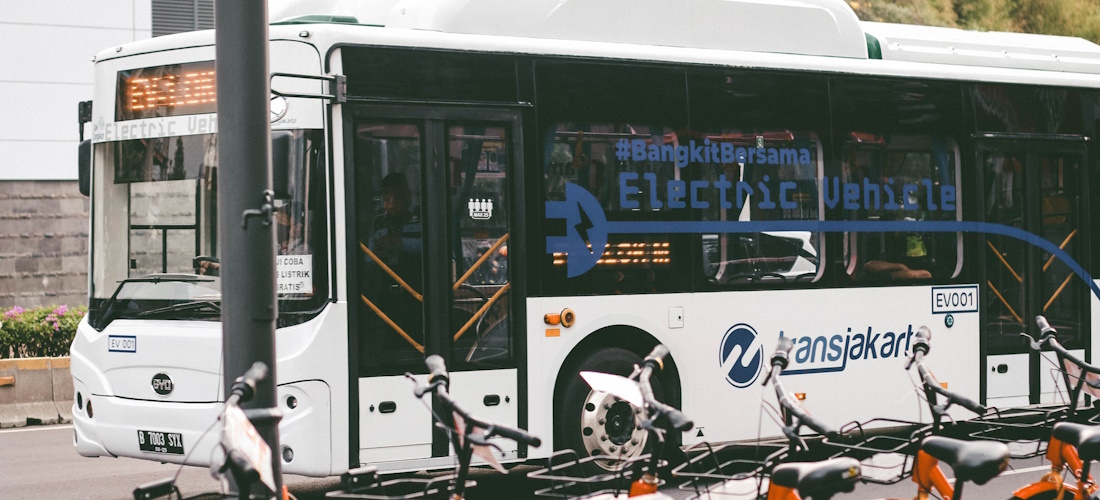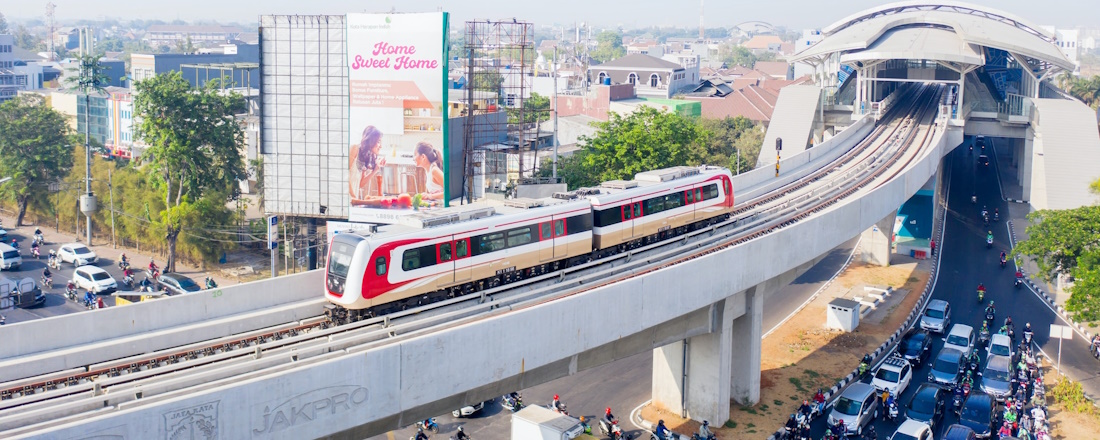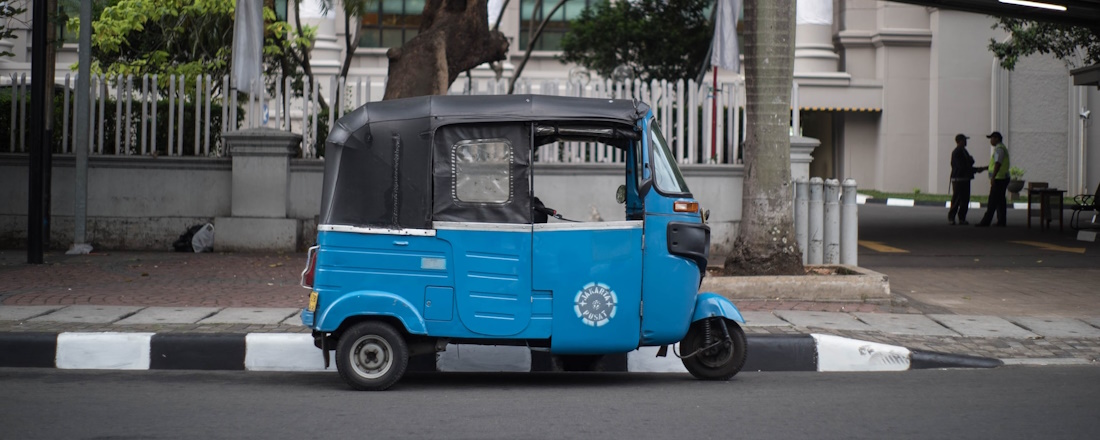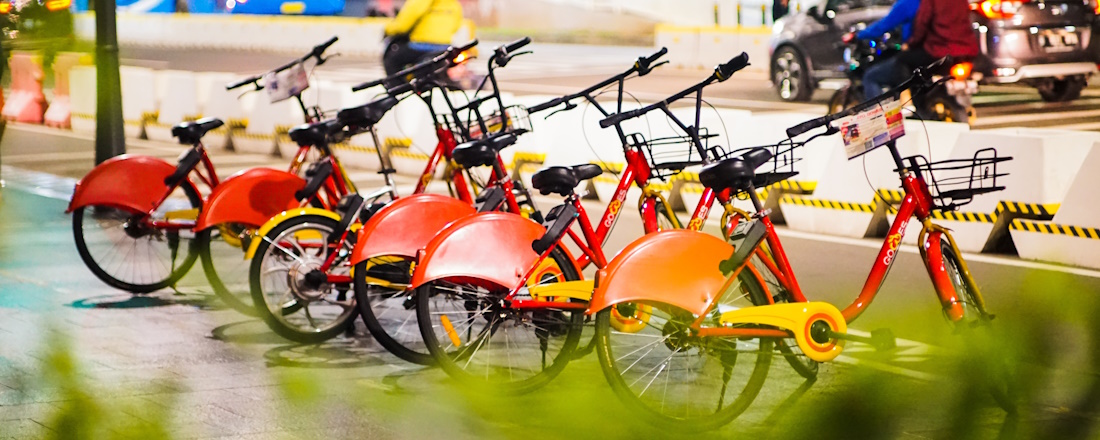- Download our Jakarta Schools Guide
Getting around in Jakarta can be difficult, so expats will need a sense of humour, the ability to plan ahead and infinite patience. There are various modes of transport available, ranging from luxurious Mercedes taxis with English-speaking drivers to the very basic bajaj, the Indonesian equivalent of a tuk-tuk.
Most wealthy Indonesians and expats employ a full-time driver to take care of their transport needs, but for the average Jakartan, this is a luxury they cannot afford. For most people living and working in Jakarta, buses, rail, ojeks and bajaj are their only options.
The city’s railway system is being expanded, but the roads remain jammed in the meantime. Whether riding around in a comfortable air-conditioned car or holding on to the back of an ojek, one thing that is guaranteed in Jakarta is traffic congestion. Even the shortest road journeys can take hours, so it is advisable to allow plenty of time to reach one’s destination.
See Transport and Driving in Indonesia for a national overview.

Public transport in Jakarta
Buses
Jakarta is home to a rapid transit system known as TransJakarta Busway. These large, air-conditioned buses have fixed routes throughout Jakarta and its satellite cities. They travel in dedicated lanes, which helps skip some traffic. The busway has several corridors, and passengers may have to make transits between corridors to get from A to B, so it’s worth it to study the route and switches beforehand.
The Jakarta Busway is also integrated with feeder routes that shuttle passengers to the nearest bus shelter, operated by several privately owned bus systems, the largest being Kopaja. These buses are medium-sized, typically full and overcrowded, with no air-conditioning. They are being phased out in favour of modern Minitrans and Metrotrans buses.
Trains
Trains run from Jakarta to the suburbs and beyond. The trains are busy and often very crowded on the KRL Commuterline, but trains are the fastest way to get in and out of Jakarta while avoiding the heavily congested roads.
The journey between Greater Jakarta and Greater Bandung has been slashed from three hours to 30 minutes following the introduction of the Whoosh high-speed railway in October 2023. A further line is in the works to connect Jakarta to Surabaya.
Mass rapid transit (metro rail)
Jakarta MRT is a recent addition, with Phase 1 in operation since 2019. It’s expected to cover 67 miles (108km) when all stages are complete in the coming decades, covering a span between Lebak Bulus and Ancol on the north-south Red Line and between Cikarang and Balaraja on the east-west Yellow Line. Currently, the line spans 10 miles (16km) between two terminals at Bundaran HI and Lebak Bulus.
The Jakarta MRT uses a contactless smartcard known as the Jelajah, which can be purchased at ticketing machines or station ticket offices. Various Jakartan electronic prepaid cards and e-wallets can also be used, and fares can be paid via the app.

Light rail
Two light rail transit (LRT) systems operate and are under expansion in the city. Jakarta LRT currently operates between Velodrome and Pegangsaan Dua in North and East Jakarta, with plans to expand farther east and south.
Jabodebek LRT is intended to link the Jakarta city centre with Bogor, Depok and Bekasi. It’s also known as the Greater Jakarta LRT. The Jabodebek LRT operates within Greater Jakarta and West Java.
As with the MRT, these systems allow for many cash and cashless payment methods. The cashless payment methods include various prepaid cards as well as LinkAja e-wallets.

Taxis in Jakarta
There are a number of taxi services in Jakarta, with ridesharing services such as Grab being recommended for expats. Drivers are generally skilful, have knowledge of the city and speak reasonably good English. They are a safe bet for newcomers to Jakarta and those unfamiliar with the area.
Other local taxi drivers generally don’t speak English and often have only basic knowledge of the city. It is not unheard of for these drivers to get lost and for journeys to take longer than expected because they have to stop to ask for directions.
There are also ojeks, which are motorcycle taxis; bajaj, which are motorised rickshaws; and becaks, which are cycle rickshaws.
Driving in Jakarta
Driving in Jakarta is generally not recommended. For most people who can afford it, having a full-time driver is the easiest and most convenient option for getting around Jakarta. The driver’s pay is based on a daily rate, and overtime is added if they work late and on weekends. A good driver is invaluable as he will have an excellent knowledge of the city’s roads and know the quickest routes to a given address.
Expats who prefer to drive themselves must obtain an Indonesian driving licence, known locally as a SIM (Surat Izin Mengemudi). SIM registration can be done online or in person at a police station. Anyone with a valid foreign licence can register and take a theory test to obtain a local licence.

Cycling in Jakarta
Cycling has not traditionally been advisable in Jakarta, but conditions are slowly changing, with safety features such as bike lanes and cycle paths being added around the city. The government is also piloting a bike-sharing scheme called GoWes in some parts of the city, making getting around on two wheels more convenient. The GoWes app can be downloaded on the Play Store for Android and the App Store for Apple.
Walking in Jakarta
Walking in Jakarta is problematic. First off is the pollution, which makes this form of exercise unpleasant, as does the sheer volume of traffic. Walking is easier in the centre of Jakarta, around the shopping malls and in some expat residential areas. In general, walking in Jakarta is not as pleasurable as it might be in other cities.
What do expats say about public transport options in Jakarta?
"The public infrastructure in Jakarta is not fully established yet. You can hire a taxi with an affordable rate, but it’s a challenge to find a reputable taxi in rush hour. The other option is hire a driver and car." Read more of Meilisa's take on expat life in Jakarta.
Further reading
► For more information about expat life in Jakarta, have a look at Lifestyle in Jakarta.
Image credits: TransJakarta Bus by Pradamas Gifarry, Train on a Bridge by Rifki Kurniawan, Black and Blue Bajaj by Rezal Scharfe, Orange Bicycles by Yulia Agnis, all on Unsplash.
Are you an expat living in Jakarta?
Expat Arrivals is looking for locals to contribute to this guide, and answer forum questions from others planning their move to Jakarta. Please contact us if you'd like to contribute.
Expat Health Insurance
Cigna Global Health Insurance.
Medical insurance specifically designed for expats. With Cigna, you won't have to rely on foreign public health care systems, which may not meet your needs. Cigna allows you to speak to a doctor on demand, for consultations or instant advice, wherever you are in the world. They also offer full cancer care across all levels of cover, and settle the cost of treatments directly with the provider.
Moving Internationally?
International Movers. Get Quotes. Compare Prices.
Sirelo has a network of more than 500 international removal companies that can move your furniture and possessions to your new home. By filling in a form, you’ll get up to 5 quotes from recommended movers. This service is free of charge and will help you select an international moving company that suits your needs and budget.
Get your free no-obligation quotes from select removal companies now!


